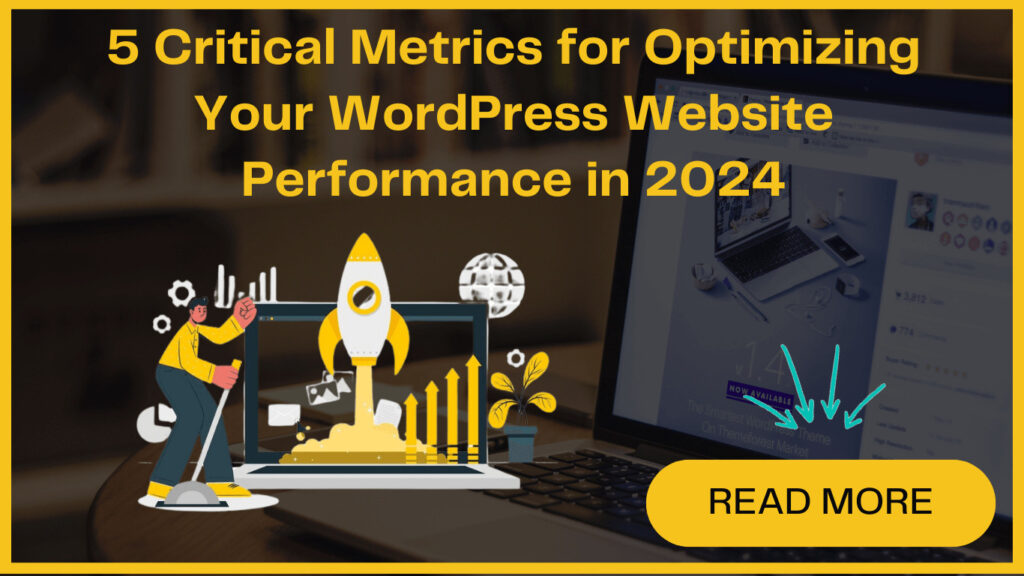
Having a WordPress site is just the foundation of your online journey. But to truly become successful in the online world demands powerful actions. You need to do something powerful to check if your WordPress site is meeting its objectives or unlocking its full potential.
Moreover, to properly understand how well your WordPress website is doing, you need to monitor and optimize your site continuously. It’s not just about designing an eye-catching site; it’s about ensuring it’s responsive, user-friendly, engaging, secure, and search engine optimized.
There are some key website metrics you need to consider. You might question their importance, but believe me, it’s quite useful.
In this comprehensive guide, we’ll explore crucial metrics you should be measuring to gauge your WordPress website performance. Before we proceed further, we’ll first understand how to measure these metrics.
How to Measure Vital Metrics to Assess Website Performance ?
Understanding the website performance is crucial to business owners. However, when making decisions, many business owners rely on intuition rather than data-driven reports. Ultimately, they didn’t get the desired results when it comes to their website performance.
Furthermore, tracking key analytics metrics such as website traffic, user behaviour, page views, and the number of visitors can provide invaluable insights. This data empowers you to make informed decisions and foster confident growth for your website.
The simplest method to measure these vital metrics in WordPress is by utilizing tools like Google Analytics Dashboard for WP, MonsterInsights, Google Site Kit, and others.
These plugins and tools offer various features and functionalities to cater to different website needs and preferences. Depending on your specific requirements and preferences, you can choose the one that best fits your website’s analytics needs.
Key Metrics for Boosting Your WordPress Website Performance
To monitor and optimize your WordPress website performance and speed effectively, it’s crucial to focus on key metrics. Keep these essential metrics in mind when adjusting your website performance strategies.
1. Bounce Rate
To find your bounce rate-
Bounce Rate = (Number of visitors who left without doing anything / Total number of visitors) * 100%
For example, if you had 100 visitors today and 25 of them left without doing anything, your bounce rate would be Bounce Rate = (25 / 100) * 100%
Bounce Rate = 25%
This means that 25% of your visitors didn’t find anything they liked enough to explore further. There could be many reasons for this. If your site is hard to navigate, or if the layout is confusing or pages load slowly.
2. Website Traffic
To access this, you can navigate to Insights » Reports and examine the ‘Overview’ report.
This report provides a graphical representation of trends over the last 30 days. When you hover over the graph, you can observe unique sessions on specific days. Utilize this metric to gauge the influx of visitors and track trends in your website traffic.
For instance, if you have a WordPress blog, analyzing sessions will help you understand whether your readership is growing. If not, it’s imperative to explore methods to enhance blog traffic.
Furthermore, explore metrics such as average session duration and total users to gain deeper insights into user engagement.
3. Demographics
User demographics provide valuable insights into your audience. Using this insight, you can customize products and offerings to specific gender or age groups based on their interests.
Understanding demographics unveils hidden opportunities. For instance, if you run an eCommerce store cosmetics, analyzing demographics could reveal a strong interest in particular skincare products among a specific age group. This will allow you to craft specialized skincare lines targeted at that demographic.
4. Outbound Links On Your Web Page Or Blog
You can track external link clicks using tools like MonsterInsights. This tool has seamless link-tracking capabilities.
Analyze which outbound links get the most clicks. This surely presents opportunities for forging new partnerships.
For instance, identifying frequently clicked outbound links allows you to initiate collaborations with those websites.
You can recommend reciprocal backlinks to enhance mutual visibility or explore affiliate marketing programs to boost revenue streams.
Moreover, tracking outbound links provides valuable insights into user behavior. This gives you fresh content ideas by understanding the content preferences that drive users to external sites. You can create enhanced versions of similar articles on your own website.
5. Top Google Search Terms for Your Website
Using tools like MonsterInsights, you can conveniently access this data within your WordPress admin area. It will display the top 50 keywords users use to find your site on Google.
By analyzing the Google Search Terms metric, you can determine which keywords drive traffic to your site.
If you check the report in-depth, you’ll be able to see data on clicks, impressions, click-through rates (CTR), and average position for each search term.
Utilize this report to identify keywords that are in the top position in Google search results and optimize them accordingly.
Additionally, leverage the report to uncover “low-hanging fruit” keywords—terms that have the potential to reach the first page of Google with minor adjustments to meta titles, internal linking, and keyword optimization.
Furthermore, the report helps you discover new keyword ideas to target on your website. Identify similar search terms that are already performing well and integrate them into your content optimization strategy. This proactive approach enables you to expand your keyword rankings, ultimately giving you an opportunity to drive organic traffic growth to your site.




